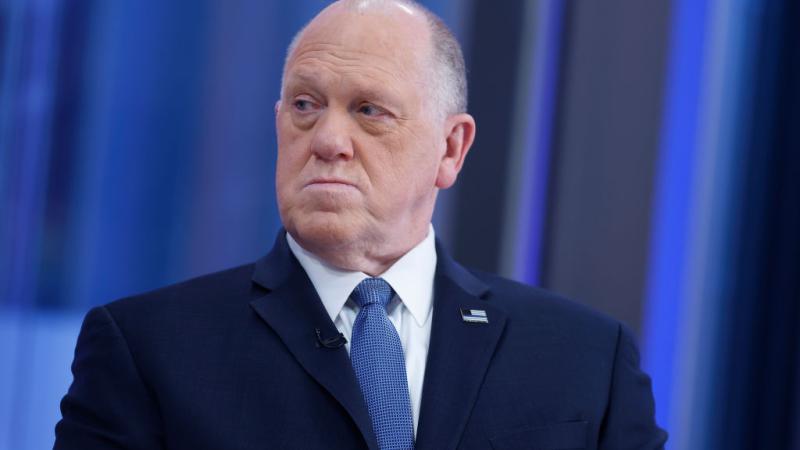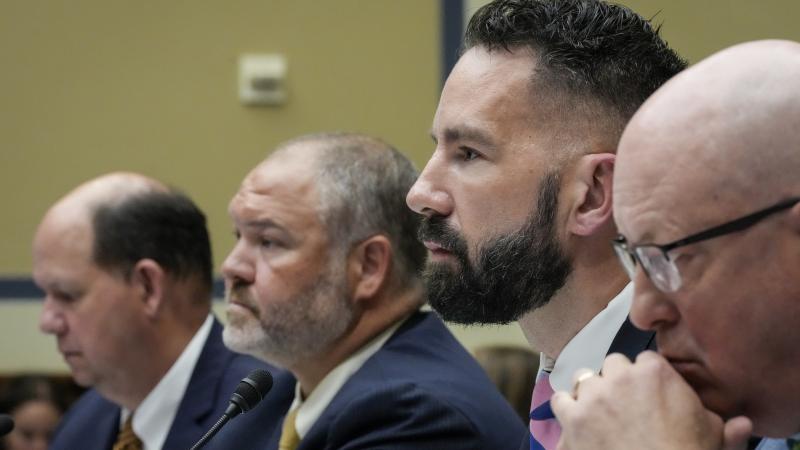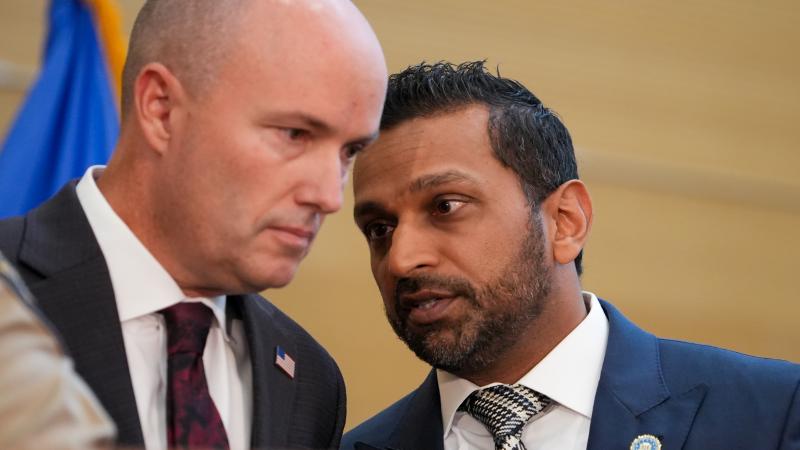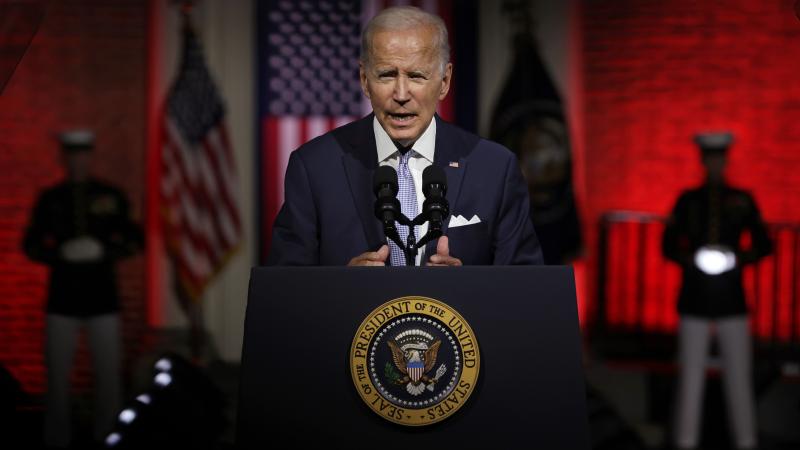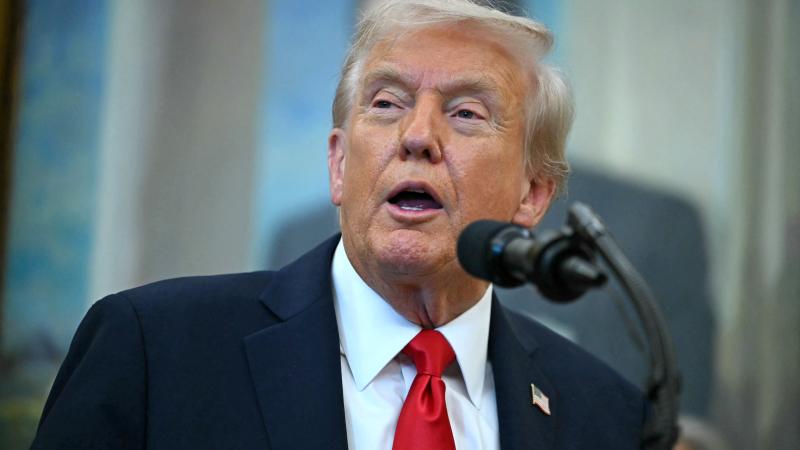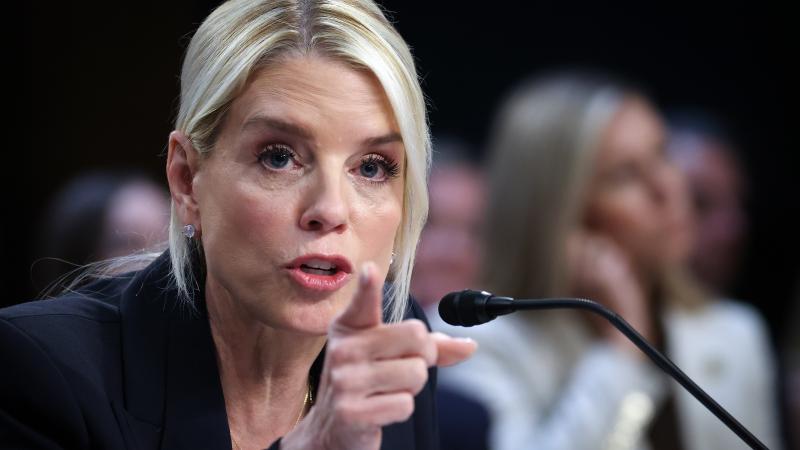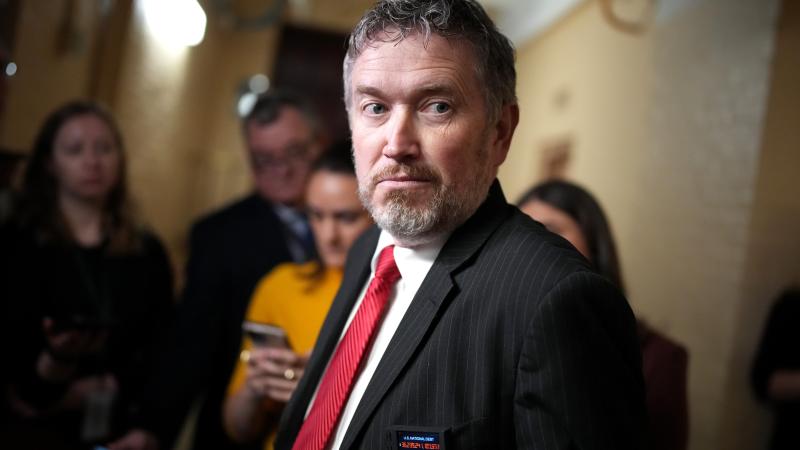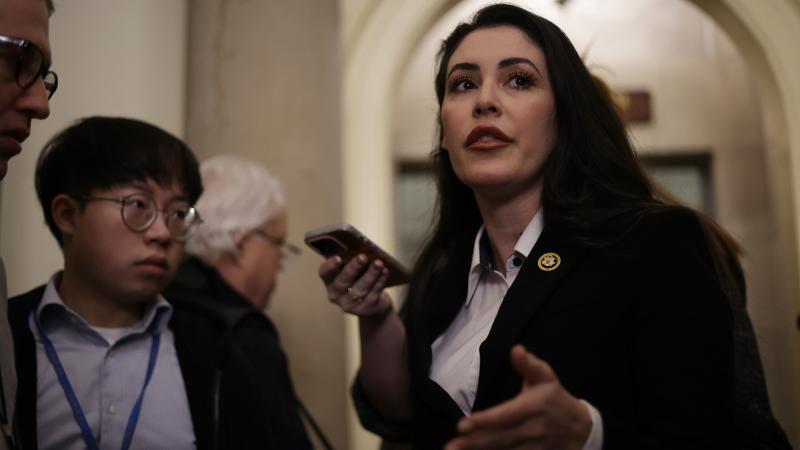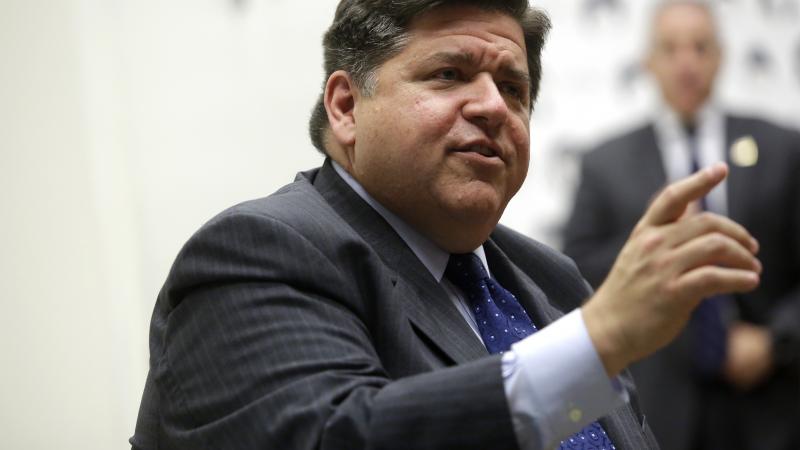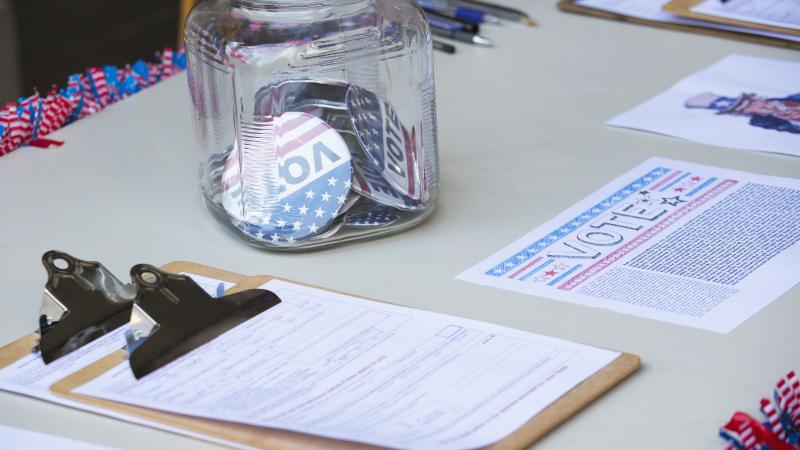Dems fight Gabbard's disclosure with faulty Senate report that claimed Steele Dossier wasn’t in ICA
Cherry-picking from the wrong tree: Obama and other top Democrats are pointing to a faulty Senate report which missed crucial info in effort to ignore declassification revelations, and are pretending that the superseding Ratcliffe report doesn't exist.
A host of top Democrats including former President Barack Obama, are relying on a 2020 Senate Intelligence Committee report in an effort to defend themselves against new evidence declassified by Trump intelligence chief Tulsi Gabbard. That Senate report is flawed: it includes a since-discredited claim that the Steele Dossier was not used in and did not inform the 2016 U.S. intelligence community assessment.
Last week, Gabbard sent declassified evidence to the Justice Department on what she dubbed a “treasonous conspiracy” related to top U.S. intelligence officials allegedly politicizing intelligence related to Russia and the 2016 election. Obama was joined by the Democratic ranking members of both the Senate and House intelligence committees and by former Obama DNI James Clapper — who helped lead the formulation of the ICA — in pointing to the bipartisan Senate intel panel’s 2020 report to dispute Gabbard’s claims.
The Senate Intelligence Committee concluded in heavily-redacted reports in April and August 2020 that British ex-spy Christopher Steele’s bogus anti-Trump dossier was not used in the body of the ICA and that the dossier's claims were not used to underpin any of the ICA’s findings. That conclusion was debunked by a newly-declassified House Intelligence Committee report and by a recent CIA review, and contradicted by a public House intel report and other declassified records as well.
The Senate committee’s April 2020 report — which focused on the ICA — also wrongly suggested that Obama CIA Director John Brennan had opposed including the dossier in the ICA, while the newly-declassified House report and the recent CIA review both include testimonial evidence that Brennan had in fact fought to include dossier claims in the assessment over the objections from top CIA analysts. CIA Director John Ratcliffe sent a criminal referral on Brennan to the FBI following the CIA "lessons-learned" review earlier in July.
The Senate Intelligence Committee’s fourth volume of its report on Russian meddling and the 2016 election, released in April 2020, was titled “Review of Intelligence Community Assessment.” The report stated that the “Committee found that the information provided by Christopher Steele to FBI was not used in the body of the ICA or to support any of its analytic judgments.” The Senate panel’s fifth volume on Russia, released in August 2020, also asserted that “the dossier material was not used in the ICA and did not contribute to its findings.”
This repeated conclusion is now known to be false.
What we know: Obama directed the tainted 2016 report
The 2016 ICA was written at the direction of President Obama and largely overseen by Brennan, Clapper, and since-fired FBI Director James Comey. It was finished in December 2016, with a publicly declassified version released in early January 2017 and a more extensive classified version declassified and released last week.
Comey and former FBI Deputy Director Andrew McCabe had pushed in December 2016 to include Steele's debunked dossier in the 2016 ICA on alleged Russian meddling. The dossier was included in an annex to the assessment and was directly referred to in the most highly-classified version of the ICA.
But the newly-declassified House report and the recent CIA review sharply criticized Brennan for allegedly joining with these anti-Trump forces in the FBI in pushing to include Steele’s anti-Trump dossier in the 2016 ICA over the objections of Russia experts in the Obama administration's intelligence community.
Steele, a former MI6 agent, was hired in 2016 by the opposition research firm Fusion GPS, which was being paid by Clinton campaign lawyer Marc Elias. The dossier was used by the FBI to obtain FISA warrants against a Trump campaign official, and evidence continues to emerge about how it was included in the ICA on Russia and the 2016 election. The Clinton campaign and Democratic National Committee were later fined by the Federal Elections Committee for failing to disclose that they paid for the Fusion GPS report.
Democrats lash out at Gabbard, insist 2016 and 2020 reports were correct
A spokesperson for Obama released a statement Tuesday in response to Gabbard’s report from last week, where he sought to deny Gabbard’s claims — pointing to the 2020 Senate report.
“Out of respect for the office of the presidency, our office does not normally dignify the constant nonsense and misinformation flowing out of this White House with a response. But these claims are outrageous enough to merit one,” the Obama statement read.
“These bizarre allegations are ridiculous and a weak attempt at distraction. Nothing in the document issued last week undercuts the widely accepted conclusion that Russia worked to influence the 2016 presidential election but did not successfully manipulate any votes. These findings were affirmed in a 2020 report by the bipartisan Senate Intelligence Committee, led by then-Chairman Marco Rubio."
Sen. Mark Warner, D-Va., the vice chairman of the Senate Intelligence Committee now and at the time of the Senate report in question, also pointed to his committee’s 2020 report defending the December 2016 ICA on Russian meddling, and he tweeted last week that “it is sadly not surprising that DNI Gabbard, who promised to depoliticize the intelligence community, is once again weaponizing her position to amplify the president’s election conspiracy theories.”
Warner on Wednesday again tweeted that “the bipartisan, unanimous finding of the Senate Intelligence Committee, after years of painstaking investigation, more than 200 witness interviews, and millions of documents, was that Russia launched a large-scale influence campaign in the 2016 election in order to help then-candidate Donald Trump.”
“It’s a day that ends with ‘y’ and Donald Trump desperately wants to change the subject, so Director Gabbard is rehashing decade-old false claims about the Obama Administration. Few episodes in our nation’s history have been investigated as thoroughly as the Intelligence Community’s warning in 2016 that Russia was interfering in the election,” House Intelligence Committee Ranking Member Jim Himes, D-Conn., tweeted last Friday.
“While everyone has the right to critique the steps that IC leaders took under immense pressure, every legitimate investigation, including the bipartisan Senate Intelligence Committee investigation, found no evidence of politicization and endorsed the findings of the 2016 Intelligence Community Assessment,” he said.
Himes also went on CBS' Face the Nation on Sunday where he said that “the Senate committee, then led by Marco Rubio, a Republican and now Secretary of State, found unanimously that Russia meddled in the election to try to assist Donald Trump.”
Clapper told CNN this week that “I do need to mention that the Senate Intelligence Committee did an exhaustive examination of the totality of Russian engagement in this country, focusing specifically on the intelligence community assessment that we did and released in January of '17, and they endorsed the findings, the tradecraft used to derive those findings, and the confidence levels. And no less than then-Senator Rubio, now-Secretary of State Rubio, who was then, I believe, acting chairman of the Senate Intelligence Committee, made that observation himself in — when that report — redacted version of that report was released."
Invoking Rubio and ignoring truth of Russiagate's genesis
Rubio is indeed the current Secretary of State, but although he was a Senate Intelligence Committee member, he was not leading the Senate committee in April 2020 when the ICA-focused report was released.
Former Sen. Richard Burr, R-N.C., became the intelligence chairman in January 2015. Warner became the vice chairman in mid-November 2016, after Trump’s victory. Burr stepped aside from the chairmanship and Rubio became acting chair in May 2020 — after the fourth volume had been released but before the fifth and final volume was issued in August 2020.
Other GOP members of the Senate panel back in 2020 have released statements in recent days criticizing the intelligence community in the wake of declassified revelations about the ICA. Sen. Tom Cotton, R-Ark., tweeted last week that “it’s clear that the biggest purveyors of disinformation in the 2016 campaign were Barack Obama, Hillary Clinton, and John Brennan” in response to a tweet from Gabbard about the “Creation of the Russia Hoax.”
Sen. John Cornyn, R-Texas, tweeted on Thursday that he was “urging” Attorney General Pam Bondi “to appoint a special counsel to investigate the extent to which former President Obama, his staff, & administration officials manipulated the U.S. national security apparatus during Russiagate.”
Cornyn also said that “while we’ve known there was ZERO evidence of collusion” between Trump and Russia, “it’s become more evident that the entire Russia collusion hoax was fabricated by the Obama admin to subvert the will of the American people.”
Rubio, Cotton, and Cornyn released a statement accompanying the release of the fifth volume of the Senate report in August 2020, where the senators said, "The committee found no evidence that then-candidate Donald Trump or his campaign colluded with the Russian government in its efforts to meddle in the election. ... After more than three years of investigation by this Committee, we can now say with no doubt, there was no collusion."
The Obama team, now under legal scrutiny, are hoping that Rubio's earlier imprimatur somehow blesses the tainted reports.
Team Obama's denials about Steele Dossier, 2016 report fall apart
The recent declassification of the 2020 House Intelligence Committee report revealed that despite repeated denials, the earlier 2016 ICA on Russian election meddling unambiguously relied on the Steele Dossier when crafting the widely-spread narrative that Russian leader Vladimir Putin aspired to help Donald Trump win. That ICA also ignored previously-raised evidence that the Russian leader may have favored (or at least fully expected) a Hillary Clinton victory instead.
The declassified 2020 House report critiqued the “high confidence” assessment by the FBI and the CIA that Putin had “aspired” to help Trump win in 2016, and added that “the judgment that Putin developed ‘a clear preference’ for candidate Trump and ‘aspired to help his chances of victory’ failed to adhere to the agency's standards of analysis. In other words, only recently has the public learned that the report "blessed" by Rubio was, in fact, a house of straw. The newly-declassified report includes strong evidence that the ICA directly cited the Steele Dossier when the ICA argued that Putin had aspired to help Trump win.
The newly-declassified analysis stated that contrary to claims made by the intelligence apparatus both then and now, “the dossier was referenced in the ICA main body text, and further detailed in a two-page CIA annex.”
The flawed ICA stated that “we assess the [Russian] influence campaign aspired to help Trump's chances of victory” in the 2016 election, and the most highly-classified version of the ICA “was followed by four bullets of supporting evidence” — and the declassified House analysis stated that “the fourth bullet referred the reader to a detailed summary and analysis of the dossier.” The ICA stated: “For additional reporting on Russian plans and intentions, please see Annex A: Additional Reporting from an FBI Source on Russian Influence Efforts”, a reference to the Steele Dossier.
Comey, other Obama officials overruled objections to Steele Dossier
The House report stated that “by devoting nearly two pages of ICA text to summarizing the dossier in a high-profile assessment intended for the President and President-elect, the ICA misrepresented both the significance and credibility of the dossier reports.” Margot Cleveland and Mollie Hemingway of The Federalist pointed out that "Senior intelligence officials strenuously fought the demands of former FBI Director James Comey and other Obama intelligence chiefs to include the false and unverified Steele dossier."
According to Cleveland and Hemingway, “Based solely on what we DO know now, my bottom line is this – unless FBI is prepared to provide much better sourcing – I believe this should NOT be included in the paper,” one official wrote, caps and all.
“Even though the dossier information was unclassified, [...] it was omitted from both the Top Secret version of the ICA released for Congress, and the unclassified, public-release version,” the House report said. “By relegating the dossier text to only the highest classified version of the ICA, the authors were better able to shield the assessment from scrutiny, since access to that ICA version was so limited.”
The declassified House report said that the ICA “misrepresented the unsourced Steele Dossier” as having been reliable intelligence reporting on Russian plans and intentions.
The House report also said that “the ICA referred to the dossier as ‘Russian plans and intentions,’ falsely implying to high-level U.S. policymakers that the dossier had intelligence value for understanding Moscow's influence operations.”
In fact, a now-declassified 2018 House Permanent Select Committee on Intelligence report raised serious credibility problems with the ICA Obama and his subordinated propagated, including findings that "The Intelligence Community Assessment judgments on Putin's strategic intentions did not employ proper analytic tradecraft," and most notably, unambiguous statements that "When asked directly, none of the interviewed witnesses provided evidence of collusion, coordination, or conspiracy between the Trump campaign and the Russian government."
Semantic wordplay: Steele Dossier wasn't "added" but "annexed" to ICA
The Senate Intelligence Committee’s April 2020 report concluded that the dossier was not included in nor referenced in the ICA, and only that “a summary of this [Steele] material was included in Annex A as a compromise to FBI's insistence that the information was responsive to the presidential tasking.”
The report includes denials from Clapper and Brennan that the ICA was used to underpin any ICA judgments and claims from the two that they had opposed using the dossier in any way in the ICA.
This turned out to be false: the recently-revealed evidence shows that Brennan insisted on including the dossier in the ICA. “All individuals the Committee interviewed stated that the Steele material did not in any way inform the analysis in the ICA—including the key judgments—because it was unverified information and had not been disseminated as serialized intelligence reporting,” the Senate report said. “The material was instead included in Annex A of the compartmented ICA.”
“I don’t think you'II find in any of the footnotes in the ICA any reference to the dossier. We thought it important to include a summary description of it, but it was not included as an organic part of the ICA,” Clapper told the Senate panel in 2018. “For our part, particularly the CIA and ODNI, since we could not validate the second and third-order assets, that's why we did not use it as part of the assessment. ... It was not included as an organic part of the assessment.”
Brennan also told the Senate committee in 2018 that top CIA officials were "very concerned about polluting the ICA with this material.” Brennan claimed that the dossier "was not used in any way as far as the judgments in the ICA were concerned."
These claims, detailed and endorsed by the Senate panel, have been proven to be false, and may be the cornerstone of confirmed criminal investigations into Brennan and others.
Years after his testimony before the Senate, Brennan testified before the House Judiciary Committee in May 2023, where he was forced to talk about the ICA and the Steele Dossier. He told lawmakers that the CIA had opposed including the dossier in the ICA. Clapper also testified before the same committee the same month, where he said the dossier was not used in the ICA and that the ICA did not include any reference to the dossier and did not draw upon the anti-Trump document to reach any conclusions.
Those comments could fall within the five-year statute of limitations for possible false statements to Congress.
Brennan pushed for dossier inclusion despite knowing its infirmities
Contradicting the Senate panel’s conclusions, the newly-declassified House analysis provides further detail on how Brennan ensured that the dossier would be included in the ICA, despite objections from Russia experts at the CIA. It is now known that the report stated that “the DCIA [Brennan] rejected requests from CIA professionals that the dossier be kept out of the ICA.”
The report cited a senior intelligence officer present at a meeting with Brennan where “two senior CIA officers — one from Russia operations and the other from Russia analysis — argued with DCIA that the dossier should not be included at all in the ICA, because it failed to meet basic tradecraft standards.”
The same officer said that Brennan refused to remove the reference to the dossier and, when Brennan was confronted with the dossier's significant problems, said that Brennan reportedly replied, "Yes, but doesn't it ring true?"
The blockbuster "lessons learned" review by the CIA's John Ratcliffe revealed that “despite these objections, Brennan showed a preference for narrative consistency over analytical soundness” and that “when confronted with specific flaws in the [Steele] Dossier by the two mission center leaders – one with extensive operational experience and the other with a strong analytic background – he appeared more swayed by the Dossier's general conformity with existing theories than by legitimate tradecraft concerns.”
Utterly contradicting his congressional testimony, the CIA review memo stated that Brennan ultimately formalized his position in writing, arguing that “my bottomline is that I believe that the information warrants inclusion in the report.”
A whistleblower emerges
The Ratcliffe report concluded that “the decision by agency heads to include the Steele Dossier in the ICA ran counter to fundamental tradecraft principles and ultimately undermined the credibility of a key judgment.”
That review also said that “agency heads decided to include a two-page summary of the Dossier as an annex to the ICA, with a disclaimer that the material was not used ‘to reach the analytic conclusions.’ However, by placing a reference to the annex material in the main body of the ICA as the fourth supporting bullet for the judgment that Putin ‘aspired’ to help Trump win, the ICA implicitly elevated unsubstantiated claims to the status of credible supporting evidence, compromising the analytical integrity of the judgment.”
According to newly-declassified and partially-redacted September 2019 emails first obtained by Just the News, one surprising assertion that the Steele Dossier had played a role in the ICA seemed to originate with top IC election security official Shelby Pierson, who had been appointed the Election Threats Executive (ETE) within the Office of the Director of National Intelligence (ODNI) by then-DNI Dan Coats just a couple of months prior.
The National Intelligence Council’s deputy national intelligence officer for cybersecurity responded to the email with a stunned tone, dismayed that the Steele dossier’s use in the ICA could have been hidden from him. Gabbard’s office said last Friday that this intelligence officer became a whistleblower.
FBI accidentally admits that Steele Dossier was a key basis for faulty ICA
Notably, the Senate Intelligence Committee revealed in its April 2020 report that the FBI committed an “error” when the bureau said that the Steele Dossier had underpinned at least one of the judgments in the ICA. The Senate committee repeatedly prodded the FBI into withdrawing its claim that the dossier had been used to inform the ICA.
The ICA had concluded that the Russian meddling in 2016 "was [the] boldest yet in the U.S.” The support for that conclusion was, in fact, directly lifted from the Steele Dossier.
“The LHM [letterhead memorandum] originally submitted to the Committee was an FBI summary of materials FBI had received from Christopher Steele,” the committee wrote in its April 2020 report.
“The LHM specifically cites the various ‘company reports’ that are included in the Steele material, which are a compilation of reports all titled (and numbered as) ‘company reports.’ Submission of this memo for footnote 222 appears to have been an FBI error, as the LHM did not support the ICA language cited.
When the Committee noted this anomaly to the FBI in repeated conversations, as well as noting repeated statements by FBI and CIA that no Steele material was used in the ICA, the FBI withdrew this document.” The Senate panel also referenced the annex which contained Steele Dossier claims, stating that “Annex A represents a summary of information provided to the FBI by Christopher Steele.”
“The second LHM, 'Additional CROWN Reporting for USIC Tasking’ was provided to the Committee as the supporting material for footnote 222. The final citation is an open source reference to an October 31, 2016, piece in Mother Jones,” the committee reported. CROWN was reportedly a codename in the intelligence community for the Steele Dossier.
Overruled: Many intel officers did not have "high confidence" Putin wanted to aid Trump
The December 2016 assessment from the CIA, the FBI, and the NSA concluded with “high confidence” that Putin “ordered an influence campaign in 2016” and that Russia worked to “undermine public faith in the U.S. democratic process, denigrate former Secretary of State [Hillary] Clinton, and harm her electability and potential presidency” and “developed a clear preference for President-elect Trump.”
Admiral Mike Rogers, then the leader of the NSA, diverged from Brennan and Comey's approval, expressing only “moderate confidence” rather than “high confidence” that Putin had “aspired to help” Trump’s election chances in 2016 by “discrediting” Clinton" and publicly contrasting her unfavorably to him.”
The Senate intelligence panel said that “the differing confidence levels on one analytic judgment are justified and properly represented.” However, the report's subheading on internal debate labeled “Confidence Level Debate Over One Judgment”, is followed by more than six pages of almost entirely redacted information.
In contrast, the newly-declassified House report critiqued the “high confidence” assessment by the FBI and the CIA. The declassified report said that “the judgment that Putin developed ‘a clear preference’ for candidate Trump and ‘aspired to help his chances of victory’ did not adhere to the tenets of the Intelligence Community Directive 203, Analytic Standards.”
The newly-declassified report states that the drafters of the ICA had turned their eyes away from evidence suggesting Putin may have been indifferent in the 2016 election, had resigned himself to Clinton winning, may have even preferred a Clinton victory, and held back damaging information on Clinton under the expectation that it would be used to undermine her assured presidency.
Cherry-picking from the wrong tree
"The ICA ignored and selectively quoted reliable intelligence reports that challenged and in some cases undermined judgments that Putin sought to elect Trump," the declassified House report added. "The ICA failed to consider plausible alternative explanations of Putin's intentions indicated by reliable intelligence and observed Russian actions."
Further questioning the reliability of the ICA being used as cover by Team Obama, the report states that "DCIA picked five CIA analysts to write the ICA, and rushed its production in order to publish two weeks before President-elect Trump was sworn-in. Hurried coordination and limited access to the draft reduced opportunities for the IC to discover misquoting of sources and other tradecraft errors."
The FBI opened a “grand conspiracy” case several weeks ago related to the nearly decade-long lawfare efforts against Trump, Just the News previously reported. The Justice Department announced on Wednesday “the formation of a Strike Force to assess the evidence publicized by Director of National Intelligence Tulsi Gabbard and investigate potential next legal steps which might stem from DNI Gabbard’s disclosures.”
It remains to be seen whether the host of revelations, contradictions and apparent falsehoods revealed in these declassifications will lead to criminal charges, despite the poor signal-to-noise ratio of public discourse, which includes claims of distraction, redirecting the focus towards the Epstein debacle, and the coloration in headlines about deflection and retribution.
The Facts Inside Our Reporter's Notebook
Links
- treasonous conspiracy
- Obama
- Senate
- House
- James Clapper
- April
- August
- newly-declassified
- recent CIA review
- House report
- other declassified records
- April 2020 report
- John Brennan
- House report
- CIA review
- criminal referral
- lessons-learned review
- fourth volume
- fifth volume
- at the direction
- publicly declassified version
- declassified and released
- former FBI Deputy Director Andrew McCabe
- baseless anti-Trump dossier
- Clinton campaign lawyer Marc Elias
- only direct mention
- Obama
- statement
- read
- pointed
- tweeted
- tweeted
- tweeted
- said
- told
- became
- became
- acting chair
- tweeted
- tweet
- tweeted
- statement
- newly-declassified
- Intelligence Community Directive 203, Analytic Standards
- report
- analysis
- said
- publicly-released
- clarified
- concluded
- told
- claimed
- forced to talk about
- testified
- analysis
- revealed
- concluded
- said
- newly-declassified
- appointed
- dismayed
- became a whistleblower.
- revealed
- wrote
- referenced
- main source
- article
- revealed
- concluded
- Admiral Mike Rogers
- leader of the NSA
- also
- Intelligence Community Directive 203, Analytic Standards
- report
- said
- critiqued
- reported
- announced

